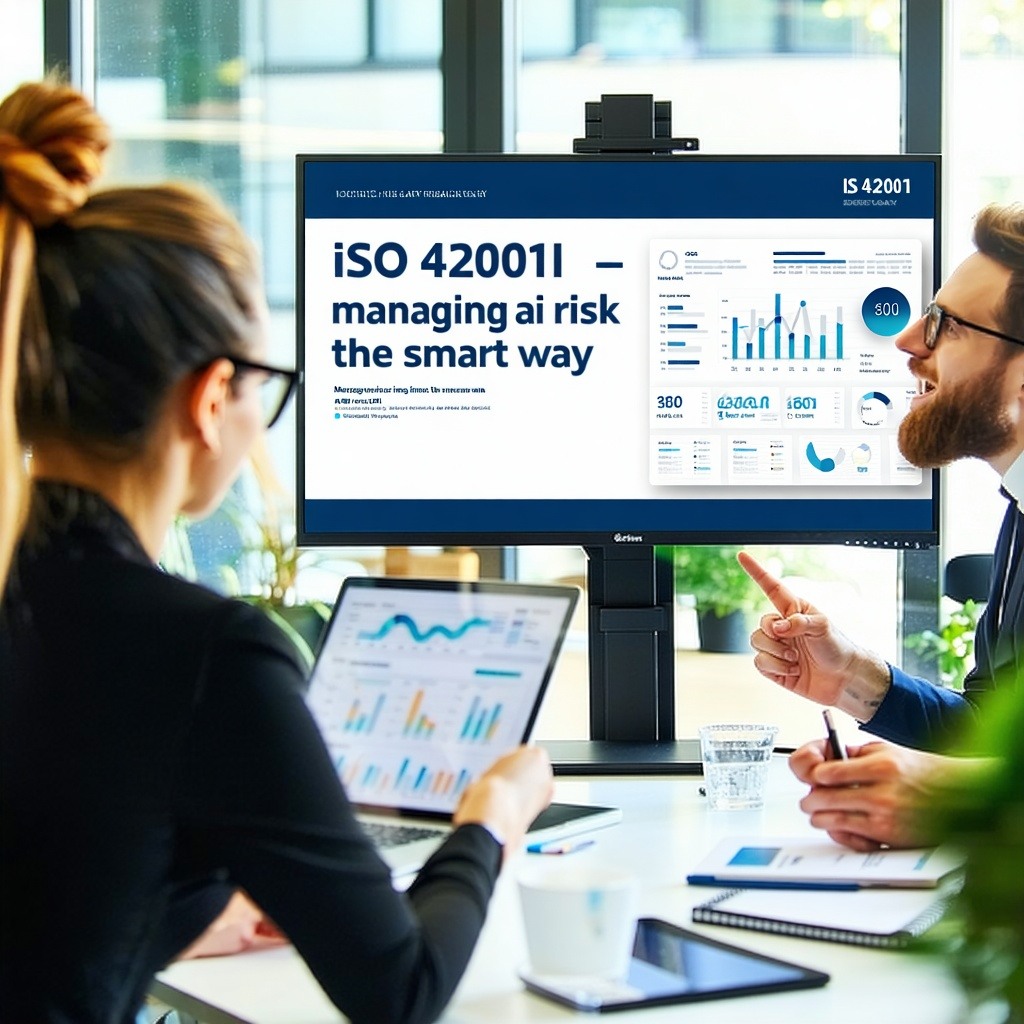Securing Artificial Intelligence (SAI)- ETSI TS 104 223 V1.1.1
The recently published ETSI TS 104 223 V1.1.1 document, "Securing Artificial Intelligence (SAI), Baseline Cyber Security Requirements for AI Models...
2 min read
![]() Palindrome Technologies
:
Apr 13, 2025 7:06:19 PM
Palindrome Technologies
:
Apr 13, 2025 7:06:19 PM

As artificial intelligence (AI) rapidly integrates into nearly every aspect of business, from customer service to data analytics, organizations face a pressing challenge: how to manage the unique risks AI systems pose. Enter ISO/IEC 42001:2023, the first international standard for AI Management Systems.
This landmark standard provides a structured, risk-based approach to help organizations use AI responsibly, effectively, and in line with stakeholder expectations.
Why AI Risk Management Matters More Than Ever
AI systems are powerful but they’re not without risks. From unintended bias in algorithms to opaque decision-making and evolving behavior in machine learning models, organizations face new challenges that traditional IT risk management frameworks simply don’t cover.
ISO/IEC 42001 bridges this gap by offering a comprehensive, governance-focused framework tailored specifically for AI. It aligns closely with principles like transparency, accountability, and continuous improvement—cornerstones for building trustworthy AI.
Key Components of ISO 42001
Key Benefits of Adopting an AI Risk Management Framework Based on ISO 42001
Why Partner with Palindrome Technologies?
Implementing ISO/IEC 42001 isn’t just about ticking compliance boxes—it’s about building sustainable, trustworthy AI ecosystems. Palindrome Technologies is uniquely positioned to help organizations navigate this journey with confidence.
Here's why Palindrome Technologies is the right partner:
Working with Palindrome means more than meeting a standard—it means leading with integrity and innovation in the age of AI.
The recently published ETSI TS 104 223 V1.1.1 document, "Securing Artificial Intelligence (SAI), Baseline Cyber Security Requirements for AI Models...
The increasing connectivity of medical devices has revolutionized healthcare, offering unprecedented benefits in patient monitoring, diagnosis, and...
Overview of AI security frameworks and recommendations for practitioners
The FCC Cyber Trust Mark: Building a More Secure IoT Ecosystem for All